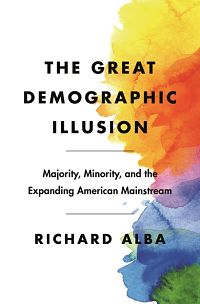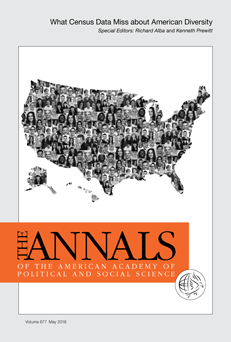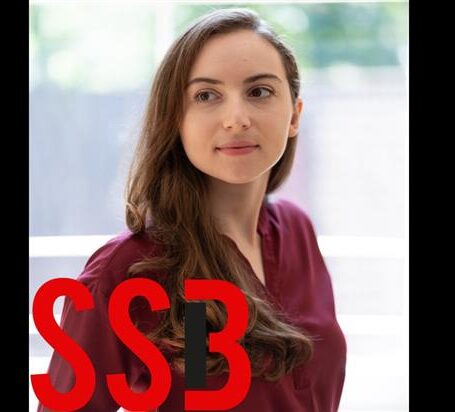Questioning the Narrative of the Majority-Minority Society
Helping to mark National Immigrant Heritage Month in the United States, Richard Alba, one of the greats of the sociology of immigration, offered this excerpt from the introduction to his latest book, The Great Demographic Illusion: Majority, Minority, and the Expanding American Mainstream, published late last year. Alba, Distinguished Professor of Sociology at the Graduate Center, City University of New York, has written, researched and theorized extensively on ethnicity, identity, immigration and assimilation in the United States and globally since the early 1970s. In this excerpt, reprinted with the kind permission of the Princeton University Press, he questions the zero-sum (and often alarmist) accounts that America is heading into a majority-minority future. Alba offers a nuanced reading on what that term actually means, how mixed background individuals change rigid boundaries, and even how the current furor over critical race theory reflects the collision of competing narratives in this space. “The argument of this book,” he writes, “is not that whites will retain a numerical majority status, although I do not rule out such a possibility, but rather that mainstream expansion, which brings about a melding involving many whites, non-whites, and Hispanics, holds out the prospect of a new kind of societal majority.”

Many Americans believe that their society is on the precipice of a momentous transformation, brought about by the inevitable demographic slide of the white population into numerical minority status and the consequent ascent of a new majority made up of non-whites. The large-scale immigration of the last half century is a major driver of current demographic change, as is the aging of the white population. Should it occur, the transformation to what is often called a “majority-minority” society, where the today’s ethno-racial minorities (African Americans, Asians, Hispanics, and Native Americans) together constitute a majority of the population, is presumed to entail profound and wide-ranging effects, from political power to cultural prominence.
For many whites, the current narrative about ineluctable demographic shift, ending in their minority status, congeals into a threatening vision about their place in America. At the extreme, their uneasiness about the future takes the form what New York Times columnist Charles Blow has described as “white extinction anxiety” and spurs them to the embrace of white nationalism. Political scientists who have analyzed the forces behind the startling and unanticipated 2016 election of Donald Trump as president argue that white “racial resentment,” stoked in part by the anxiety over massive demographic change and its implications for whites, was the most consequential among them. For many minority Americans, the same perception engenders optimism about the future and a hope that they will see the mainstream better reflect their group and its experiences.
…
Yet there are powerful reasons to be skeptical about this demographic imagining of the present and near future: it requires assuming a rigidity to racial and ethnic boundaries that has not been characteristic of the American experience with immigration. As a nation, we have been here before. A century ago, when the then new immigration from southern and eastern Europe was at its zenith, bringing masses of southern Italian and Polish Catholics and eastern European Jews to Ellis Island, there was a spasm of near hysteria in the white Protestant elite about the superior racial characteristics of native white Americans being submerged by the numbers and fertility of these inferiors. Reflecting ideas about eugenics widely discussed at the time, the patrician New Yorker Madison Grant wrote The Passing of the Great Race (1916), decrying the pernicious racial impact of the new immigrants on America’s native Nordic stock. The introduction of IQ testing shortly before World War I seemed to confirm the inferiority of the new immigrants, many of whom appeared to be intellectually deficient. Yet the national decline anticipated from the immigration of newcomers, who were held to be racially unlike established white Americans, failed to materialize.
The rigidity of ethno-racial lines is already being challenged by a robust development that is largely unheralded: a surge in the number of young Americans who come from mixed majority-minority families, having one white parent and one non-white or Hispanic one. They are now more than 10 percent of all babies born in the U.S., well above the number of Asian-only children and not far below the number of black-only infants. This surge is a byproduct of a rapid rise in the extent of ethno-racial mixing in families. What makes this phenomenon new is the social recognition now accorded to mixed ethno-racial origins as an independent status, rather than one that must be amalgamated to one group or another.

The book, The Great Demographic Illusion: Majority, Minority, and the Expanding American Mainstream, uses the rise of mixed backgrounds that span the minority-white divide as a lens to scrutinize and challenge the idea of an inevitable majority-minority society, which many Americans envision as a society cleaved into two distinct parts with opposing interests, experiences, and viewpoints. As a first step, I will show the crucial significance of the mixed group for census data that appear to herald a minority status for whites. Census ethno-racial classifications do not deal appropriately with mixed minority-white backgrounds. There is an interesting story behind this failure, which the book will tell. But the bottom line is this: for the critical public presentations of data, the Census Bureau classifies individuals who are reported as having white and non-white ancestries as not white; my analyses for the book show that the great majority of all mixed youngsters are therefore added to the minority side of the ledger. This classification decision has a profound effect on public perceptions of demographic change, but it does not correspond with the social realities of the lives of most mixed individuals, who are integrated with whites at least as much as with minorities. The census data thus distort contemporary ethno-racial changes by accelerating the decline of the white population and creating certainty about something that is speculative at best—a future situation when the summed counts of the American Indian, Asian, black, and Latino categories exceeds that of whites.
The reasons to be concerned about the widespread belief in a majority-minority future go far beyond demographic accuracy. The political impact has already been cited. Of broader significance is the role of the “majority-minority society” as a narrative: an account—often abbreviated in common understanding–about the ethno-racial changes taking place now and in the near future that shapes our perceptions of them and determines our understanding of American society on a fundamental level and of its evolution in an era of large-scale immigration. The narrative most widely believed about the immigration past, overwhelmingly European in origin, is that the descendants of the immigrants were absorbed into the mainstream society, despite initial experiences of exclusion, discrimination, and denigration for alleged inferiority. This is an assimilation story. That narrative now collides with the perception, nourished by the majority-minority concept, of a stark divide between the currently dominant white majority and non-white minorities that runs through the entire society. That perception feeds a different narrative, of an intensifying contest along ethno-racial lines for social power, taking that term in its broadest sense. This collision of narratives in the public sphere is mirrored in academic debate, between the adherents of race theory (or critical race theory), currently the dominant perspective at American universities, and those who view ethnicity and race as more malleable and potentially reshaped by assimilatory processes.
The book addresses the conflict between these narratives. And, by combining key ideas from apparently conflicting social-science theories, it seeks a more nuanced analysis of how to comprehend American society in the early 21st century. (The time span I have in mind extends to mid-century; past that point, too many unanticipated changes will have likely taken place, clouding anyone’s ability to envision their cumulative impact.) Race theory, which has been mostly tested on the African-American experience and is most relevant to groups that have been incorporated into American society by conquest, colonization, or enslavement, is in fact applicable to the new forms of ethno-racial mixing: the evidence I will show demonstrates that individuals with black and white parentage have a very different experience from other mixed persons and identify more strongly with the minority side of their backgrounds. However, many other mixed majority-minority Americans have everyday experiences, socioeconomic locations, and social affiliations that do not resemble those of minorities. On the whole, these individuals occupy a liminal “in between,” but their social mobility and social integration with whites are indicative of an assimilation trajectory into the societal mainstream.
…
To understand better the larger significance of the growing subpopulation with mixed minority-white backgrounds, the book revisits assimilation theory. Important for my argument is the 21st century version of the theory, which envisions assimilation as integration into the mainstream society rather than incorporation into the white group and does not require erasure of all signs of ethno-racial origin. The mainstream, which is constituted by institutions, social milieus, and cultural spheres where the dominant group—whites at this moment in history—feels “at home,” is not closed off against others. Just as the white Protestant mainstream that prevailed from colonial times until the middle of the 20th century evolved through the mass assimilation of Catholic and Jewish ethnics after World War II, the racially defined mainstream of today is changing, at least in some parts of the country, as a result of the inclusion of many non-white and mixed Americans.
As this discussion suggests, the theoretical exposition of mainstream assimilation must be coupled with a close examination of the assimilation past, especially the period of mass assimilation following the end of World War II. The justification for this examination is not the mistaken belief that assimilation today will replicate the patterns of the past, but rather the need to correct ideas about assimilation that have become distorted by one-dimensional understandings of that period. A deeper understanding reveals clues about what to look for in the present and what to expect in the near future.
The currently widespread understanding of white-ethnic assimilation is racial in nature: assimilation occurred when the ethnics attained acceptance as full-fledged whites. This depicts assimilation into the mainstream as an homogenizing process. However, it is more accurate, I will argue, to view the white ethnics’ assimilation as diversifying the mainstream because, before the middle of the last century, religion had been a basis for the exclusion of Catholic and Jewish ethnics from a white Protestant mainstream, but mass assimilation was accompanied by the acceptance of Judaism (in its non-ultra-Orthodox forms) and Catholicism as mainstream religions alongside Protestantism. The post-1945 mainstream society eventually redefined itself as Judaeo-Christian. We should understand the assimilation of today therefore as not inherently excluding the descendants of the newest immigrants because they cannot become white, nor requiring them to present themselves as if they were white. Instead, the mainstream can expand to accept a visible degree of racial diversity, as long as the shared understandings between individuals with different ethno-racial backgrounds are sufficient to allow them to interact comfortably as individuals. In this way, increasing participation in the mainstream society is associated with “decategorization,” in the sense that the relationships among individuals in the mainstream are not primarily determined by categorical differences in ethno-racial membership. In colloquial terms, they treat each other by and large as individuals rather than as members of distinct ethno-racial groups.

My argument will be that, for the most part, the phenomenon of mixed minority-majority backgrounds is a sign of growing integration into the mainstream by substantial portions of the new immigrant groups, especially coming from Asian and Hispanic origins. The mainstream integration of mixed individuals is signaled by such indicators as their high rates of marriage to whites. But of course, this integration process does not only involve the children from mixed families. It certainly includes many of the non-white parents also, who, it will be shown, are often settling as parents of young children in integrated neighborhoods, where many whites are also present. The mainstream does appear to be expanding and becoming more diverse. The implications are potentially quite consequential. However, the impact of racism on Americans with visible African descent is also consequential, and it presumably affects also some portions of other groups, such as dark-skinned Hispanics. The expanding role of legal exclusions also condemns unauthorized immigrants to the margins of the society and hinders their children.
What will the growing diversity in the mainstream mean for its definitional character? In the recent past and even today, it has been equated with whiteness. One scenario, compatible with race theory, sees the mainstream expansion as essentially a whitening process that will ultimately leave the mainstream defined as it is now. More plausible in my view is that the mainstream in the more diverse regions of the country will come to be, or maybe already has been, defined in multiracial and multicultural terms, especially as prominent individuals in these regions are increasingly drawn from a visibly wide set of origins; in other regions, it will remain heavily white, at least in the near future. A multiracial identity for the mainstream could further expand access, including additional space for African Americans. However, mainstream expansion today is also consistent with high levels of average inequality among groups and with the exclusion of many non-whites. Just because assimilation of some nonwhites is occurring, it would be unwise to settle into complacency about the need to promote greater equality and inclusion.
The relatively modest magnitude of mainstream assimilation today compared to the sweeping assimilation of the descendants of European immigrants in the decades following the end of World War II highlights the dependence of assimilation processes on large-scale features of the societal context, economic and demographic. I discuss these within the framework of “non-zero-sum assimilation,” a theory I develop concerning the mechanisms driving assimilation: social mobility that produces parity with many individuals in the mainstream; the growth of amicable personal relationships with such individuals; and mainstream cultural change that elevates the moral worth of minority individuals. It is the first that is most constrained in the present. In the post-World War II period, when the United States was briefly the preeminent global economic power, there was an enormous expansion of higher education and the occupational sectors it fed. This expansion engendered non-zero-sum mobility on a mass scale for the second and third generations descended from the immigrants with previously stigmatized origins, such as those from Ireland, southern Italy, Poland, and Russia. (A claim threaded throughout the book is that assimilation is more extensive under conditions of large-scale “non-zero-sum mobility,” when upward mobility by minority-group members does not require downward mobility by some in the majority.) In the early 21st century, when economic inequality is much greater than it was in the middle of the 20th century, the basis for a sizable magnitude of non-zero-sum mobility that favors minorities is demographic rather than economic: with the aging and retirement of a large number of older, well-placed white workers, there are not enough younger whites to replace them. This process will play out most intensely during the coming two decades, as the large, heavily white baby-boom cohorts complete their exit from the ages of work and civic leadership, and many individuals with minority backgrounds, including mixed ones, replace them. But contemporary assimilation is more selective: its magnitude—the extent to which it involves all parts of minority groups—will not match that of the earlier period.
In the last part of the book, I examine social policies that could enhance mainstream expansion today and also extend the option to more African Americans and others affected by severe racism. Prominent among these policies are those addressing high and growing economic inequality in the U.S. The underlying rationale is that inequality throws sand in the gears of social mobility. Policies to reduce inequality will broadly improve opportunities, including for African Americans, but they will not by themselves blunt the severe and systemic racism that is evident in the distinctive trajectory of mixed individuals with black ancestry. Reparations have become a prominent part of the public discussion for redressing black-white inequality, and they need to be considered. In addition, no discussion of the situation of black Americans can avoid the unique burdens they and their communities bear because of mass incarceration. Finally, the defective legal statuses, primarily but not exclusively unauthorized status, of many in the immigrant population need to be rectified because we know that they handicap the next generation, even when born in the U.S.
This book is the culmination of a decades-long effort to reinvigorate assimilation ideas, which have been criticized extensively for a bias in favor of the experiences of white immigrants from Europe and their descendants, and to demonstrate their continuing importance to the American story. I began in the 1970s and 80s, at a time when many commentators were arguing for the durability of the ethnicities emerging from the European immigration of the late 19th and early 20th centuries. My examination of the Italian American experience and of the sociological significance of ethnic identities among whites (which appeared simultaneously with Mary Waters’s influential and similarly argued Ethnic Options) showed assimilation to be occurring on a massive scale even as ethnic symbolism retained some vitality. My collaboration with Victor Nee that resulted in Remaking the American Mainstream, published in 2003, reworked assimilation thinking to make it relevant for an America that was becoming rapidly more ethno-racially diverse because of immigration. My 2009 book, Blurring the Color Line, pointed to mechanisms, especially non-zero-sum mobility created by demographic shift, that would promote an important degree of assimilation for non-whites. The role of this book, then, is to produce the evidence that such assimilation is indeed taking place.
This demonstration of the continuing importance of assimilation patterns is intended to counter the imagined majority-minority future arising from the widely disseminated demographic data. This demographically inspired concept, which suggests a society riven along ethno-racial lines, stimulates perceptions of threat for many whites and contributes in this way to the very polarization it envisions. The argument of this book is not that whites will retain a numerical majority status, although I do not rule out such a possibility, but rather that mainstream expansion, which brings about a melding involving many whites, non-whites, and Hispanics, holds out the prospect of a new kind of societal majority.
…






























































































